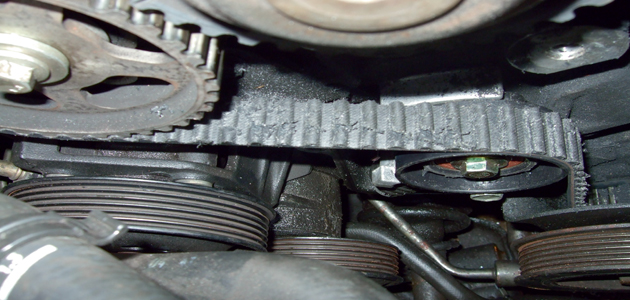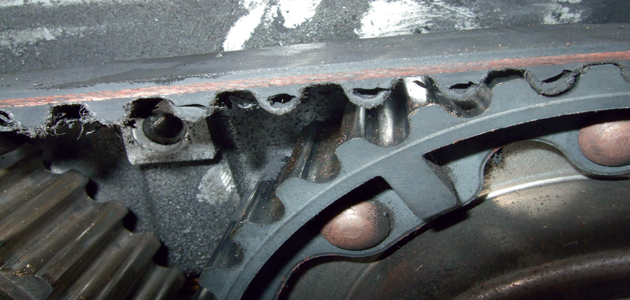
A routine belt change turned sour for an unfortunate Ford Puma driver when valve-piston contact destroyed his engine just a short time afterwards. The drive had apparently ‘jumped teeth’. It was almost as though the teeth had been ‘peeled back’ from the belt. An initial inspection indicated that crankshaft to camshaft timing had been compromised. In general, the likely causes are either insufficient tension or worn/damaged pulleys.
Insufficient tension was ruled out in this case because the automatic tensioner was in place and the belt was still tight. However, there was no evidence to support a case for worn/damaged pulleys. Moreover, there was no evidence to explain why the belt had been destroyed. There were no foreign objects (dirt, oil or water) contaminating the drive.

A mystery
And that remained the case for another couple of weeks until a call was received about the same model, from a different garage in a different part of the country. The circumstances were similar. It was another Ford Puma 1.7. A routine belt change had taken place, followed by premature failure a short time later. This belt had also ‘jumped teeth’, but this time it ‘had gone slack’.
The first investigation sought causes for damage to the belt. This one wanted to establish why the belt was slack. Two things were immediately apparent:
■ The tensioner spring was compressed
■ The kick-back stop had not been set correctly
In transit, inside the box, the tensioner spring and the kick-back stop are compressed and held in place with a tensioner pin. There is a correct procedure for installing the tensioner and removing the pin. When the tensioner is offered up, the two bolts can be inserted in order to hold the tensioner in place but must not be torqued. The tensioner pin must be withdrawn one third of the way out.
This releases both the spring and the kick-back stop from the back plate. The spring is then able to apply the necessary tension to the belt and this lifts the kick-back stop into the correct position. It also allows the bolts to sit correctly in place. The correct torque may then be applied and the pin can be removed.

Conclusion
In the second case, the bolts had clearly been torqued with the pin in place. Although removing the pin releases the spring from the back plate, the kick-back stop cannot move and remains in the transit position. That is why the belt went slack and that is why the teeth were ‘peeled back’.
A further examination of the tensioner on the first vehicle showed that the kick-back stop was also in the transit position. The tensioner bolt was off-centre. This would only have occurred if the bolts had been torqued before the pin was removed. The mystery was resolved!









